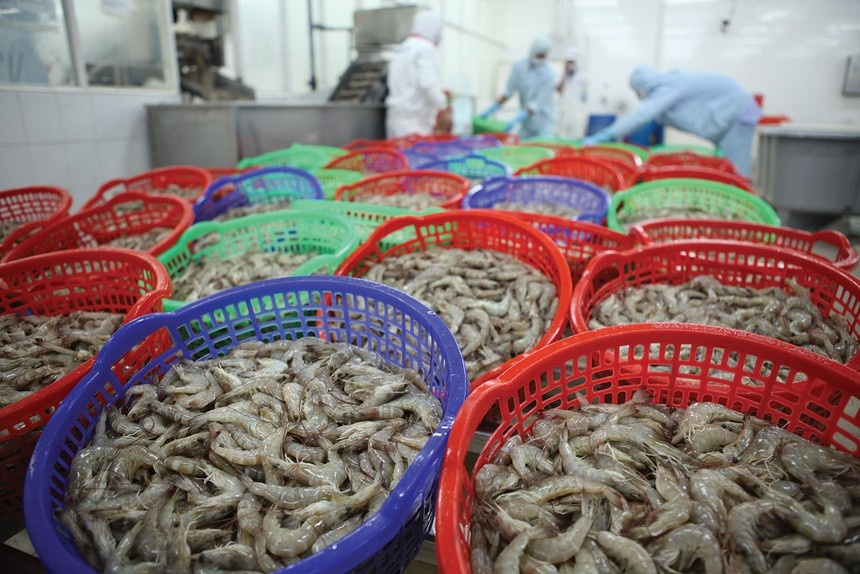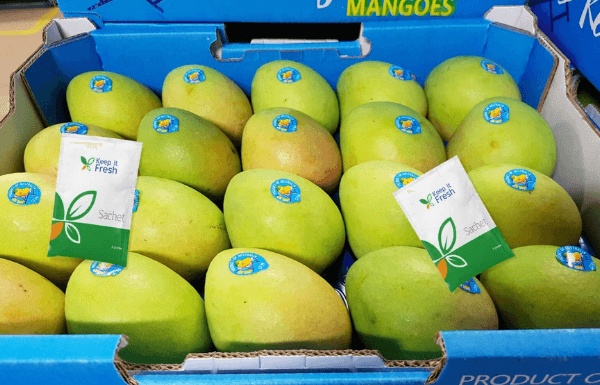Seafood sector anticipates boost in exports
Industry experts believe that the decline in China's tilapia production, coupled with the reduced supply of Russian pollock and cod, could open opportunities for Vietnamese basa fish to emerge as a potential alternative white-flesh fish product in the US market.
According to Viet Dragon Securities’ analysts, Vietnam's basa fish industry could benefit thanks to its competitive pricing, especially compared to tilapia imported from China.
 |
| Photo: baodautu.vn |
Similarly, Phu Hung Securities shares the view that the general 10-20 per cent tariff will not undermine Vietnam's competitiveness. Meanwhile, the 60 per cent tariff on Chinese goods could provide Vietnam with an edge in seafood exports, particularly in the face of tough competition between Vietnamese basa fish and Chinese tilapia.
| The decreased supply of Chinese tilapia, along with Russian pollock and cod, presents an opportunity for Vietnamese basa fish to establish itself as a promising alternative white-flesh fish product in the US. |
In the segment of imported white-flesh fish fillets in the US market, Vietnamese basa fillets are demonstrating exceptional growth potential.
Since the outset of 2024, China's reduced tilapia farming due to financial losses has caused supply shortages of raw fish and fingerlings.
This scarcity is expected to persist into the first half of 2025, as Hainan, China's primary supplier of tilapia fingerlings, struggles to recover from the severe damage caused by Typhoon Yagi.
The decreased supply of Chinese tilapia, along with Russian pollock and cod, presents an opportunity for Vietnamese basa fish to establish itself as a promising alternative white-flesh fish product in the US.
Consequently, Vietnamese basa exports to the US is projected to remain favourable in both volume and price. Vietnamese basa currently holds the largest market share in the US, with inventory levels supposedly lower than those for the same period last year.
Vinh Hoan Corporation, Vietnam's largest exporter of frozen basa fish fillets to the US, is expected to benefit significantly if the US imposes higher tariffs on Chinese imports.
In October alone, the US market contributed 37 per cent of Vinh Hoan’s export revenue. VietDragon Securities forecasts Vinh Hoan's post-tax profit could reach $78 million by 2026.
In the first 10 months of 2024, the company achieved $439 million in revenue, completing more than 98 per cent of its full-year target at $445.8 million under scenario 1 when the export markets are less favourable, or 91.6 per cent of full-year target at $479 million under scenario 2 of more favourable market conditions.
Other basa fish firms, such as Nam Viet Corporation and International Development and Investment Corporation, are forecast to benefit less as the US market accounts for only a small portion of their total export revenue.
While basa fish exports are thriving, shrimp exporters face challenges due to an anti-dumping lawsuit in the US. On October 22, the US Department of Commerce announced the final results of its anti-dumping duty investigation on frozen warm-water shrimp from Ecuador and Indonesia, as well as countervailing duty investigations on such shrimp from Ecuador, India, Indonesia, and Vietnam.
Vietnamese shrimp achieved a more favourable outcome than Ecuador and India, with a countervailing duty of 2.84 per cent compared to India’s 5.77 per cent.
The US International Trade Commission (ITC) is expected to review and issue a final ruling on whether the case holds merit On December 5.
If the ITC determines that the subsidies significantly impact the US shrimp industry, the 2.84 per cent duty will become permanent, posing a notable challenge for Vietnamese shrimp exporters. However, if the ITC rules that the subsidies have minimal impact, the case will be dismissed.
Sao Ta Foods Corporation, a big seafood exporter in Mekong delta region, reported a similar case about a decade ago when Vietnamese shrimp faced a similar lawsuit, which was ultimately dismissed by the ITC.
If the current case follows the same path, shrimp exporters to the US will have significant room for market expansion.
Furthermore, US Customs would then refund the provisional duties paid by exporters for shipments during Q2 of this year. In this scenario, the reserved funds recorded in financial statements would turn into profit.
Sao Ta Foods alone expects to reclaim nearly $1.7 million from such reserves, positively contributing to its 2024 profit targets.
For the first 10 months of 2024, the company achieved over $210.25 million in revenue, already surpassing its full-year target of $210 million.
Additionally, a significant new market has opened as on October 28, Vietnam and the UAE signed a Comprehensive Economic Partnership Agreement. The agreement is expected to create significant opportunities for Vietnamese shrimp to penetrate deeper into the Middle East market.
According to the Ministry of Agriculture and Rural Development, as of the end of October, Vietnam’s total seafood production output approximated 7.9 million tonnes, up 2.5 per cent, with export value hitting $8.33 billion, up 12 per cent on-year.
The US, China, and Japan remain Vietnam's top three seafood export markets. With impressive growth lately, the seafood industry is confident in surpassing its 2024 export target of $10 billion.
| Vietnamese power sector is a beacon of prospects Vietnam’s power sector is set to maintain its momentum with the initiation of the Power Development Plan VIII (PDP8) implementation plan, approved in April. |
 | Finance a perfect sector for application of AI A Citi GPS (Global Perspectives and Solutions) report released on June 26 states that the application of AI is particularly relevant in the financial sector. |
 | Vietnam set to boost agricultural exports to China Vietnam in the first six months of this year harvested a bumper crop from its agro-forestry-fishery exports to China which is now its largest buyer in this sector. |
What the stars mean:
★ Poor ★ ★ Promising ★★★ Good ★★★★ Very good ★★★★★ Exceptional
 Tag:
Tag:
Related Contents
Latest News
More News
- Businesses ramp up production as year-end orders surge (December 30, 2025 | 10:05)
- Vietjet chairwoman awarded Labour Hero title (December 29, 2025 | 13:06)
- How to unlock ESG value through green innovation (December 29, 2025 | 10:03)
- AI reshapes media and advertising industry (December 29, 2025 | 08:33)
- FPT and GELEX sign deal to develop blockchain tech for global markets (December 29, 2025 | 08:29)
- Vietnam’s GDP forecast to grow by 9 per cent in 2026 (December 29, 2025 | 08:29)
- Women entrepreneurs are key to Vietnam’s economic growth (December 29, 2025 | 08:00)
- Vietnam's top 500 value-creating enterprises announced (December 27, 2025 | 08:00)
- The PAN Group shaping a better future with ESG strategy (December 26, 2025 | 09:00)
- Masan Consumer officially lists on HSX, marking the next phase of value creation (December 25, 2025 | 13:20)





























 Mobile Version
Mobile Version